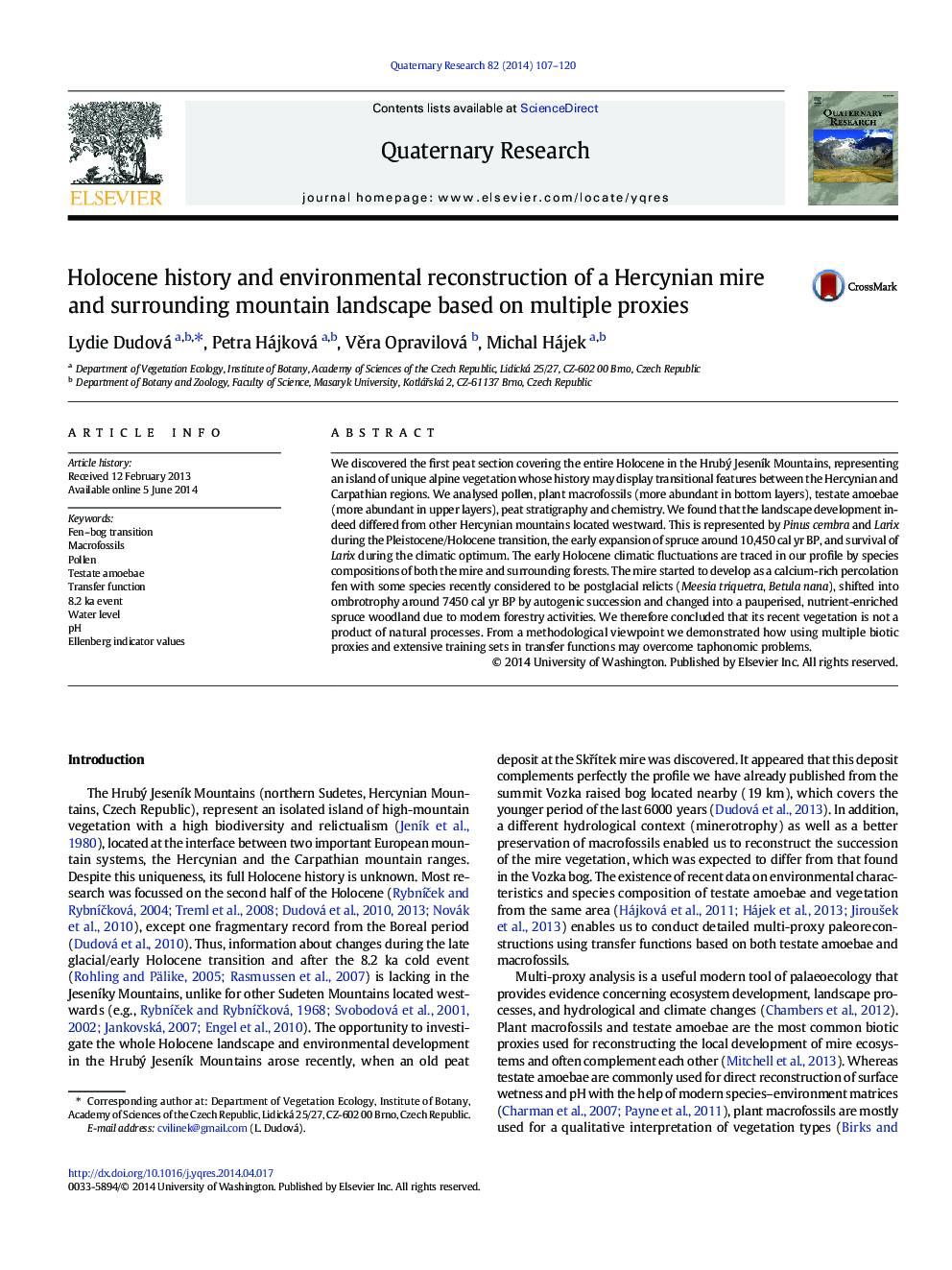| Article ID | Journal | Published Year | Pages | File Type |
|---|---|---|---|---|
| 1045320 | Quaternary Research | 2014 | 14 Pages |
We discovered the first peat section covering the entire Holocene in the Hrubý Jeseník Mountains, representing an island of unique alpine vegetation whose history may display transitional features between the Hercynian and Carpathian regions. We analysed pollen, plant macrofossils (more abundant in bottom layers), testate amoebae (more abundant in upper layers), peat stratigraphy and chemistry. We found that the landscape development indeed differed from other Hercynian mountains located westward. This is represented by Pinus cembra and Larix during the Pleistocene/Holocene transition, the early expansion of spruce around 10,450 cal yr BP, and survival of Larix during the climatic optimum. The early Holocene climatic fluctuations are traced in our profile by species compositions of both the mire and surrounding forests. The mire started to develop as a calcium-rich percolation fen with some species recently considered to be postglacial relicts (Meesia triquetra, Betula nana), shifted into ombrotrophy around 7450 cal yr BP by autogenic succession and changed into a pauperised, nutrient-enriched spruce woodland due to modern forestry activities. We therefore concluded that its recent vegetation is not a product of natural processes. From a methodological viewpoint we demonstrated how using multiple biotic proxies and extensive training sets in transfer functions may overcome taphonomic problems.
